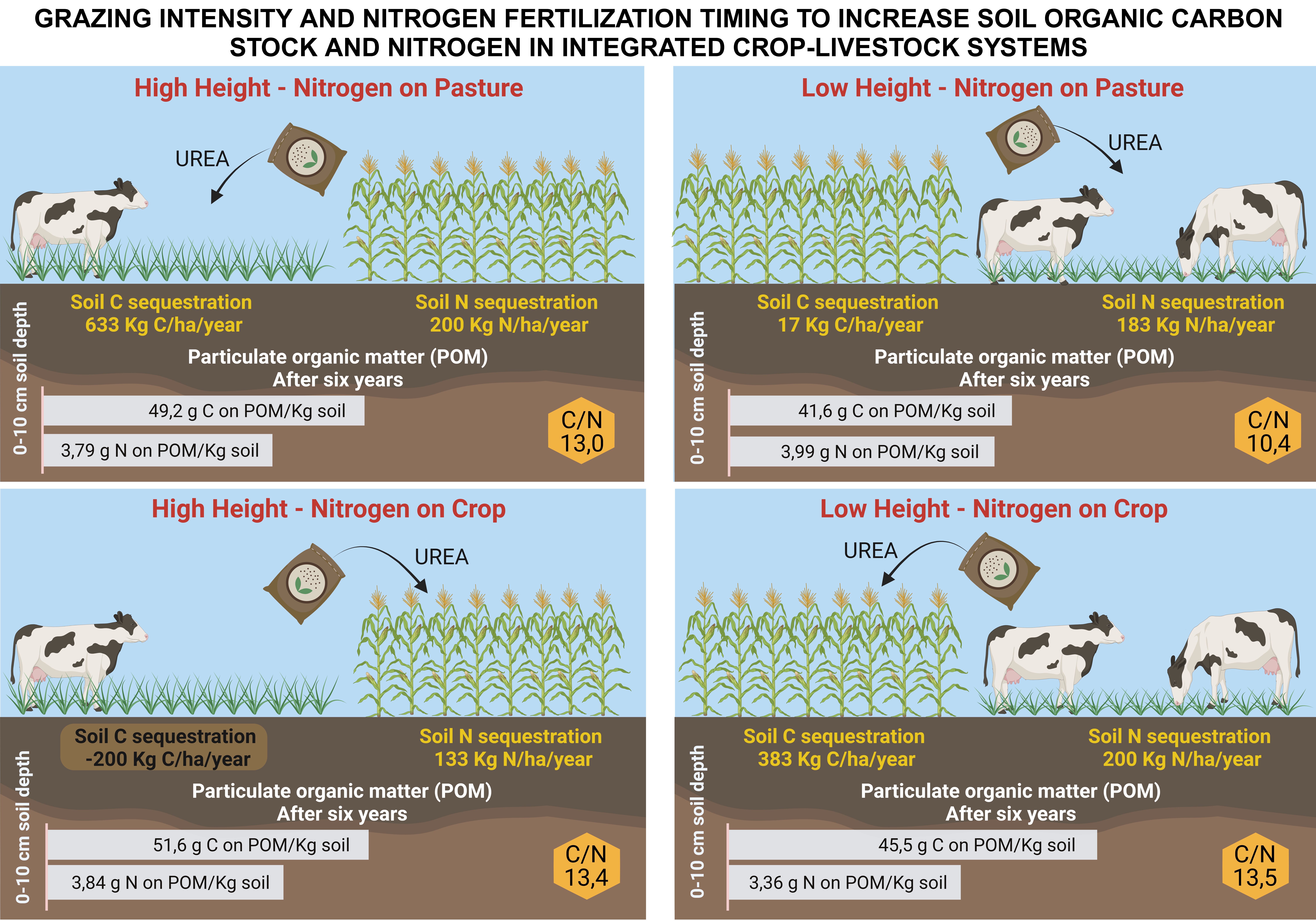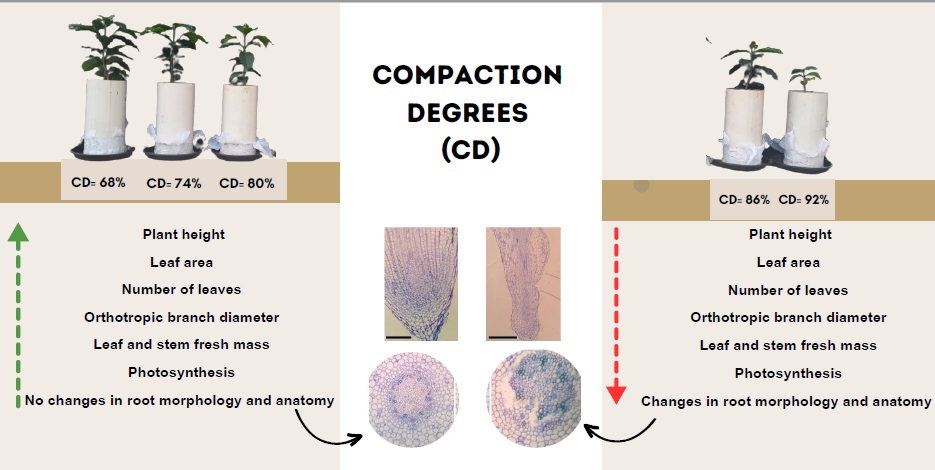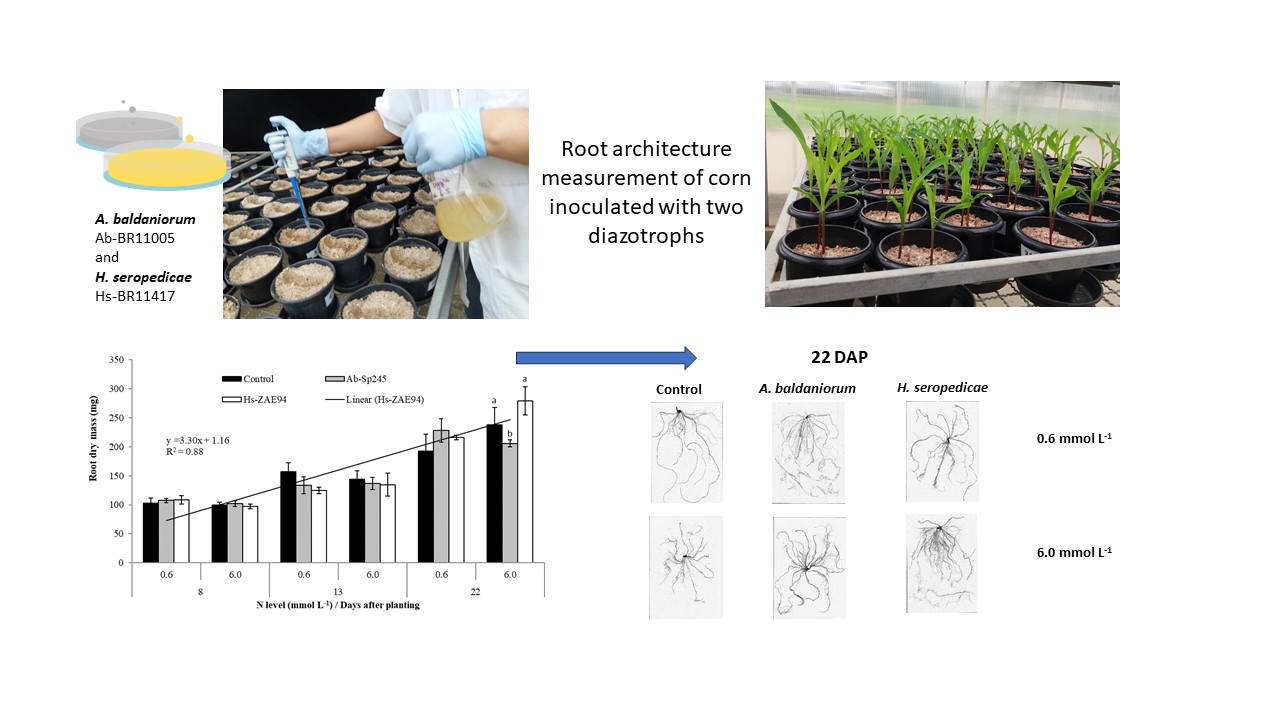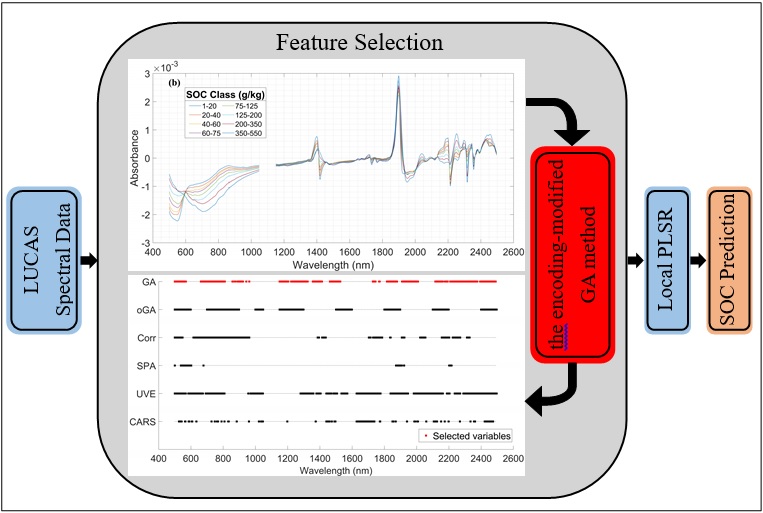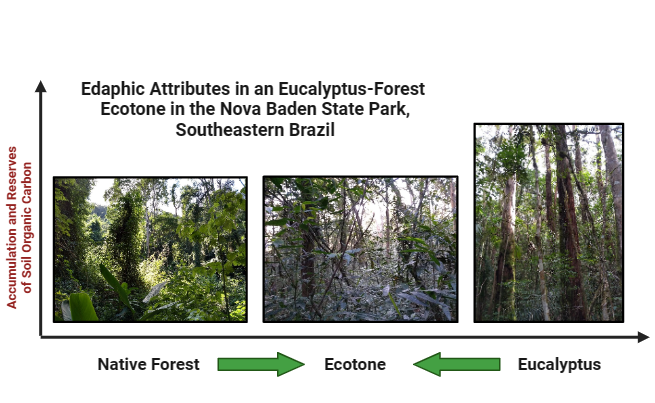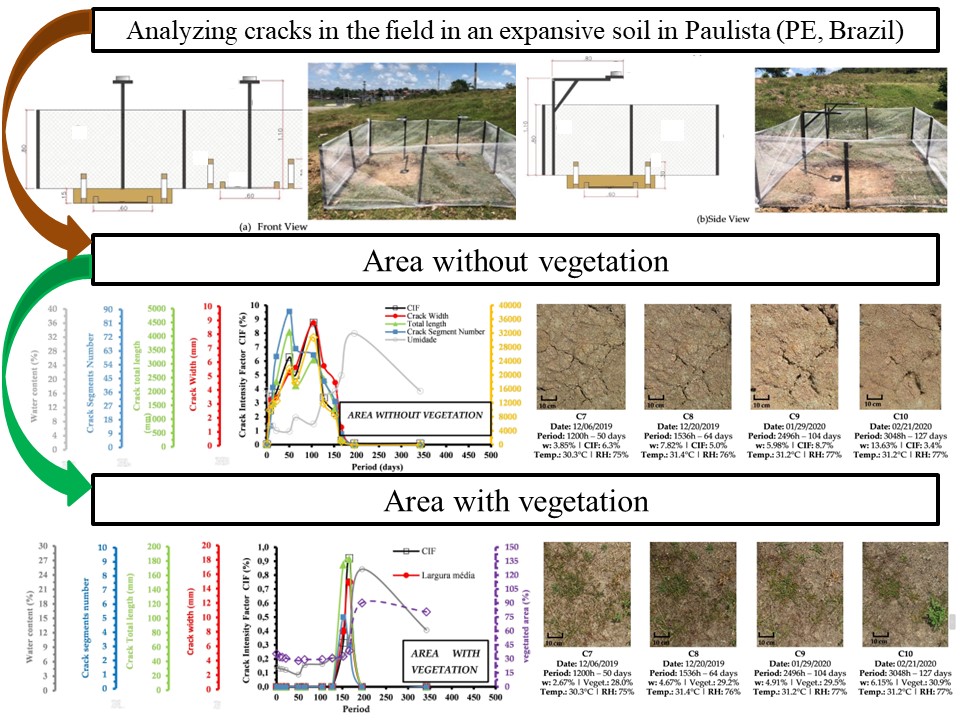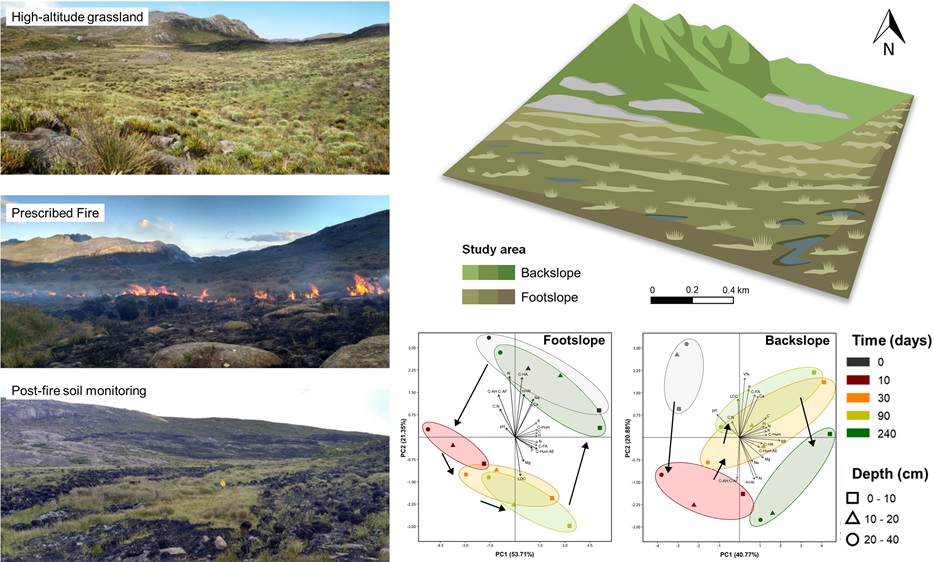Grazing intensity and nitrogen fertilization timing to increase soil organic carbon stock and nitrogen in integrated crop-livestock systems
07/Dec/2023
ABSTRACT Integrated crop-livestock systems (ICLS) foster synergistic relationships to increase nitrogen (N) cycling and soil organic carbon (SOC) accrual in agricultural setups. This study evaluated how the grazing intensity and N fertilization (rates and timing) affect both SOC and N fractions, and soil organic matter chemical composition in an ICLS managed under no-tillage in an Oxisol, six years after initiation. The ICLS was compared to a nearby pasture (PA) and a native forest (NF). The treatments consisted of two grazing […]
Inversion of soil properties with hyperspectral reflectance in construction areas of high-standard farmland
07/Dec/2023
ABSTRACT High-standard farmland construction is an important process that can enhance food security and accelerate new-style modernization agriculture. Hyperspectral remote sensing can provide data and technical support for this type of construction to provide a reference when optimizing high-standard farmland construction areas. This study was performed in Xinzheng City, the primary grain-producing areas in Henan Province. Field sampling and indoor hyperspectral spectroscopy (350~2500 nm) were combined; spectral transformations such as continuum removal (CR) were performed after Savitzky‒Golay (SG) convolution smoothing; […]
Carbon and nitrogen stocks in a Rhodic Nitisol under different tillage methods and mineral and organic fertilizers
07/Dec/2023
ABSTRACT Changes in soil management, for example by more vigorous crops, adoption of conservation tillage and optimization of fertilization, can increase soil organic carbon (SOC) and total nitrogen (TN) stocks. We hypothesized that corn – black oat rotation under no-tillage (NT) and adequate soil fertilization can increase these stocks, compared to conventional tillage (CT). This study compared these two tillage methods and organic with mineral fertilizers, regarding their effects on C and N cycling and SOC and TN stocks in […]
Physiological and morphological responses of Arabica coffee cultivars to soil compaction
07/Dec/2023
ABSTRACT Compaction caused by mechanization affects soil quality and, consequently, the development of crops. This study aimed to evaluate the effect of different degrees of soil compaction on the physiology, morphology, and anatomy of different coffee cultivars in a controlled environment. The experiment was carried out in a greenhouse, with randomized block design in a 5 × 5 factorial arrangement, with five coffee cultivars (Arara, Catuaí Amarelo IAC 62, Catuaí Vermelho 144, MGS Paraíso 2 and Mundo Novo IAC 379-19) […]
Inoculation effects of growthpromoting bacteria on corn root architecture: influence of nitrogen levels, bacterial populations, and plant genotypes
07/Dec/2023
ABSTRACT Inoculating corn with diazotrophic bacteria as growth promoters has been demonstrated to be an efficient agricultural practice in Brazil, mainly due to the root stimulation they provide to plants. This study investigates the corn (Zea mays L.) root architecture in a greenhouse assay where A. baldaniorum Sp245 and H. seropedicae ZAE94 strains were inoculated and evaluated for 22 days under two N levels: 0.6 and 6 mmol L-1 of N. Short-term bioassays were conducted to assess the plant’s response […]
Estimation of soil organic carbon content by Vis-NIR spectroscopy combining feature selection algorithm and local regression method
07/Dec/2023
ABSTRACT Soil organic carbon (SOC) content is a critical parameter for evaluating soil health. However, high redundancy and invalid information in soil hyperspectral data can reduce the accuracy and stability of SOC prediction models. This study developed a global partial least squares regression (PLSR) model and a local PLSR model for agricultural soils in the LUCAS 2015 database. Some variable selection methods were combined with the regression models and their effects on prediction accuracy were explored. In addition, when the […]
Edaphic properties in a eucalyptusforest ecotone in the Nova Baden State Park, Southeastern Brazil
07/Dec/2023
ABSTRACT State parks are integral protection units created to protect ecosystems. However, anthropic activities may have been previously performed before their creation, forming transitional areas. Studies that evaluate the modifications of edaphic properties in these environments are scarce. The aim of this study was to evaluate the changes in soil properties and litter stock in areas of eucalyptus-forest ecotones. Litter stock (Stocklitter) and total soil organic carbon content and stock (TOCsoil), weighted mean diameter (MWD), origin of aggregates (biogenic or […]
Rhizosphere microbiome engineering of Triticum aestivum L.
07/Dec/2023
ABSTRACT Root-associated microbiomes (RAMs) are complex microbial communities, essential for plant growth and development. The RAMs interact with the roots, maintain the root architecture, protect plants from a plethora of pathogens and biotic and abiotic stress and intensify nutrient uptake, i.e., improve plant growth and yield. A wide variety of microbial populations is usually found in the rhizosphere. Plant exudates also play a significant role in the establishment of rhizospheric microbial communities. This study deals with the approach of microbiome […]
Cracking process in expansive soil with and without vegetation covers in dry and rainy seasons at field scale
28/Nov/2023
ABSTRACT The presence of desiccation cracks in the soil alters its hydromechanical behavior, increasing the soil’s water infiltration capacity, mobilizing the potential for expansion. This may affect the performance of the structural elements of the construction. This study aimed to evaluate the mechanics of expansion, contraction and cracking of the expansive soil of Paulista – Pernambuco, Brazil, through field trials, subject to wetting cycles and drying. The studied soil is a sandy silty clay of high compressibility with medium to […]
Slope position controls prescribed fire effects on soil: a case study in the high-elevation grassland of Itatiaia National Park
28/Nov/2023
ABSTRACT There is a need for greater knowledge about the medium- and long-term effects of prescribed fire management on soil in ecosystems prone to wildfires and more vulnerable to climate change. This study examined the short- and medium-term effects of prescribed fire on soil chemical properties and chemical fractions of soil organic matter (SOM) in two positions of the landscape in a high-elevation grassland environment. The ecosystem is located in the mountain peaks of southeastern Brazil associated with the Atlantic […]

